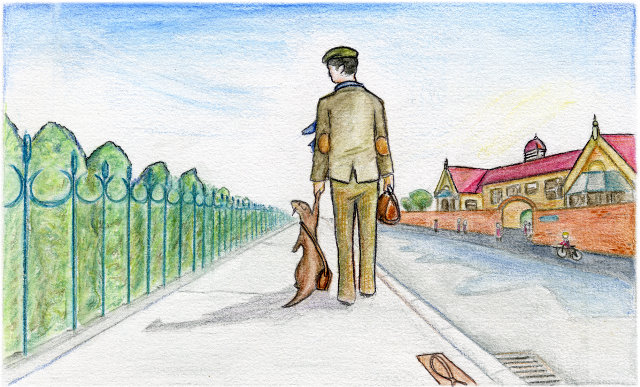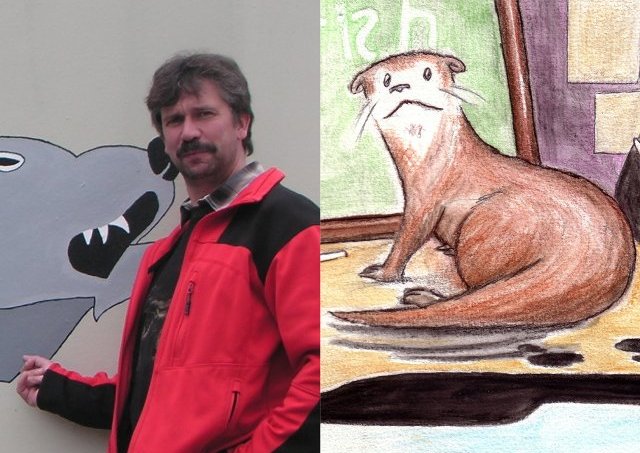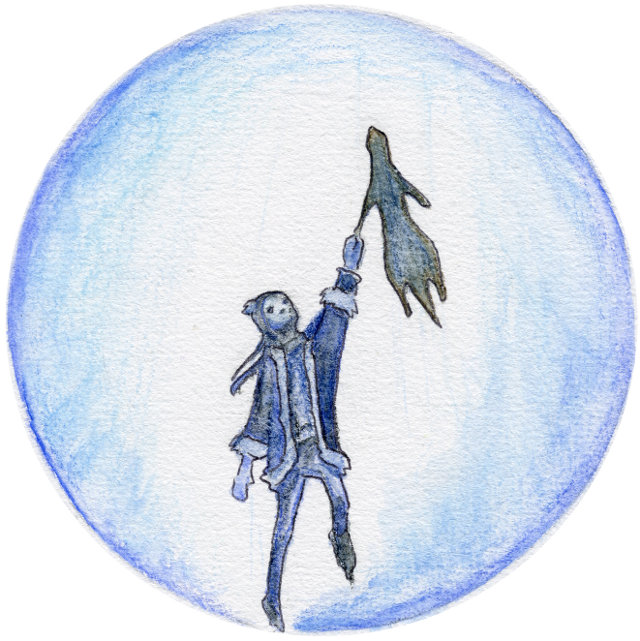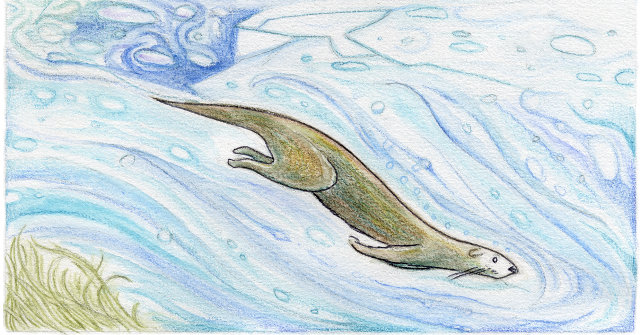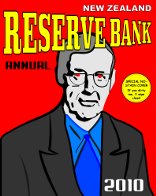I have long wanted to collaborate with a proper artist on a book. While I can draw spaceships and explosions -- and, of course, the governor of the Reserve Bank of New Zealand -- I am fully aware that this does not imply any sort of artistic talent.
A proper artist has X-factor. You look at their work, and think: "Wow, that is so cool!" -- rather than, for example: "Dude, is that supposed to be Alan Bollard?" On a good day, I could perhaps be described as an adequate draughtsman; but that's about as far as I'll ever get.
I loved the drawings of Wellington artist Peter Adamson from the moment I saw them. His work was bleak and gothic -- and brimming with X-factor. Naturally enough, when I met him in person, I wasn't exactly backwards in coming forwards about a potential collaboration. Before he could think up a polite excuse, I had trapped him into agreeing to a joint project.
Initially we planned a limited-edition picture book for grown-ups -- and Peter made some lovely menacing sketches. But then his life was thrown into chaos by the very premature arrival of his son. By the time Peter had surfaced again, neither of us were keen to work on a project that was even remotely depressing.
As new parents, however, we had both been thrown into close contact with the dullness of many (but, of course, by no means all) children's picture books. And it struck us that we could ease the suffering of parents everywhere by making our own contribution to this field. Our mission statement was straightforward: "to produce a simple book that young children will enjoy, but which is simultaneously amusing enough so that adults won't vomit with boredom."
This entailed compromise, of course. I've been writing children's stories for years, but mostly ones that will give children nightmares -- so my motto became: "Don't terrify the kids." On the other hand, Peter's illustrations have been known to accentuate the dark and grotesque side of existence, so he adopted his own new motto: "And don't put the kids into a lifetime of therapy."
Above: Walking to school.
We decided on a little story that I'd written in Glasgow called 'The Hidden Talent of Albert Otter'. The story has slightly unusual origins in that it was inspired by a conversation with my friend Gschwendtner, in which he told me about his friend -- a Bavarian volunteer firefighter by the name of Albert Otter.
It was the closest I've ever come to a psychic experience. Interpolating between only two data points (Albert Otter's name and occupation), I was able to make an uncannily accurate 'reading' of his life.
Me: Of course, your friend Albert Otter struggled at school because no one understood him...
Gschwendtner: Actually, I believe he did quite well at school.
Me: And then he bit his piano teacher. But luckily he had a connection to King Ludwig III...
Gschwendtner: I seriously doubt that...
Me: And if he were really an otter (but living with a normal human family) then the whole thing would make much more sense...
Gschwendtner: I doubt that, too.
Above: The real Albert Otter (left) and the fictional Albert Otter (right).
At any rate, a true-life children's story set in Bavaria, written in Glasgow, and by a New Zealander -- is, if nothing else, a unique combination in the annals of children's literature.
Such uniqueness doesn't make things easy for the poor old illustrator, of course. Peter had to hint at the style and architecture of the last days of the Kingdom of Bavaria (just prior to WWI). He also had to deal with suggestions from me: "Can you draw an otter concentrating on a musical score, while he attempts to play the piano?"
It's confirmation of Peter's genius that he managed to pull it off, and produce a beautiful series of illustrations. I confess to being thoroughly delighted with the final book -- it's one of those rare situations where a project ends up better than I'd imagined.
Above: Albert Otter in cold water with a member of the royal family.
Anyway, if this book sounds like it might appeal to a child that you know (niece, nephew, grandchild, neighbour, son or daughter) then it's now for sale at Public Address Books. It's aimed at ages 3-6, and you can see a preview here.
As always, we appreciate if you buy online because it returns a much larger royalty to the author and illustrator (and the book usually costs you less, too). We also offer our fabulous sign-o-rama and inscribe-o-rama service, where you can request the author to sign and/or inscribe the book for you. But, of course, if you strongly prefer to buy from a bookshop then please favour one of our recommended independent booksellers -- particularly our friends at Arty Bees Books in Wellington.
We're hoping this book will be a success (or, at least, not a gigantic failure) as we have great plans for follow-up picture books. Having lulled parents into a false sense of security, we intend to give our dark side a freer rein in our next effort.
So you'd better start saving for those child psychiatrist bills now.
